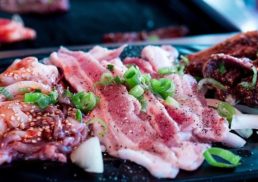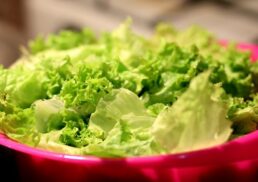Who doesn’t love a steaming bowl of shoyu ramen, with its rich, savory broth, chewy noodles, and endless customizable toppings? Now, imagine the satisfaction of making this delicious Japanese dish in the comfort of your own home! In this blog post, we’ll explore the world of shoyu ramen, covering everything from its flavor profile to vegan and gluten-free alternatives. So, grab your chopsticks, and let’s begin our culinary journey!
Table of Contents
Key Takeaways
Discover the iconic umami-packed Japanese dish, Shoyu Ramen!
Excitingly choose from a variety of noodles and toppings to customize your perfect bowl.
Explore vegan & gluten free alternatives for an unforgettable culinary experience!
The Essence of Shoyu Ramen
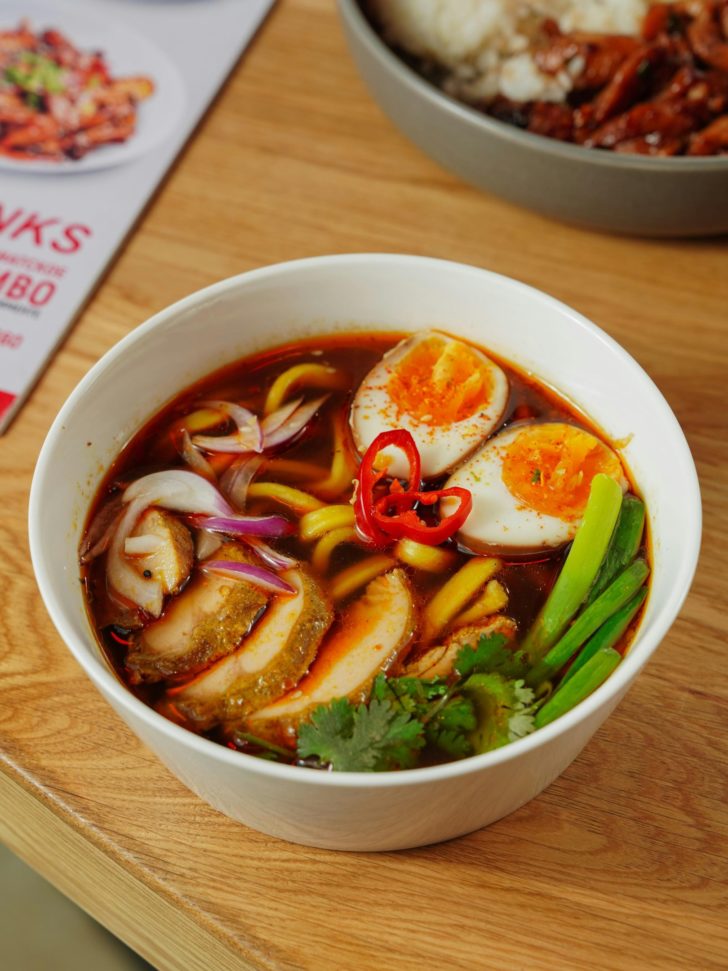
Originating in Japan, shoyu ramen is a mouthwatering dish that features a soy sauce-based broth, alongside a variety of customizable toppings, and a rich umami flavor. The key component of a delicious shoyu ramen recipe is its broth, which is made of:
dashi
pork broth
chicken broth
soy sauce
rice vinegar
mirin
This flavorful hot broth, enriched with spicy chili bean paste, sets the stage for a parade of toppings, from chashu pork to menma, a Japanese condiment made from lacto-fermented bamboo shoots, and bean sprouts adding a crunchy texture.
Shoyu ramen is one of the most popular types of ramen in Japan, alongside miso ramen and tonkotsu ramen. Each type of ramen has its own unique recipe, with shoyu ramen being characterized by its clear brown soup and soy sauce-flavored base. This dish has a history dating back to 1910 when it was first served at a restaurant called Rairaiken in Asakusa, Tokyo, also known as Tokyo ramen.
Flavor Profile
The flavor profile of shoyu ramen is a delightful dance of savory, salty, and slightly sweet notes, creating a harmonious balance of soy sauce, dashi, and meat or vegetable stock. The broth is enriched with ingredients such as chicken stock, garlic, and ginger, delivering a flavor-packed soup. The interplay of ingredients is fundamental, where soy sauce imparts the umami flavor, dashi lends depth and richness, and the meat or vegetable stock contributes to a fantastic overall flavor profile.
Traditional ingredients like chicken or pork bones, kombu seaweed, dried anchovies, and shiitake mushrooms enhance the flavor even further, making shoyu ramen an unforgettable culinary experience.
Regional Variations
Shoyu ramen can be found throughout Japan, with exciting regional variations depending on local preferences. Some examples include:
Tokyo ramen: known for its light soup broth with a nostalgic and familiar taste
Sapporo ramen: bursts with flavor from miso and includes plenty of delicious vegetables
Osaka ramen: features a clear, brown broth
Hokkaido ramen: uses unique ingredients such as chicken broth, dashi, ginger, garlic, dried sardines, and kombu
These regional renditions of shoyu ramen showcase the versatility and adaptability of this classic dish.
Choosing the Perfect Ramen Noodles
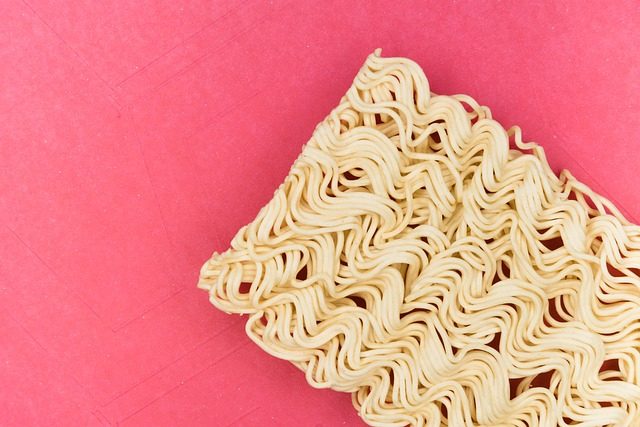
Selecting the right ramen noodles can greatly impact the overall taste and texture of your shoyu ramen dish. You can use fresh, dried, or even instant noodles, with miso ramen typically featuring wavy, curvy noodles, and straight, thin noodles common in rustic, thick tonkotsu soups. Noodles get their yellow tint and springy texture from kansui, an alkaline solution used in their production.
Cooking and draining fresh ramen noodles is a breeze, as they can be boiled according to package instructions and drained well in a strainer.
Fresh vs. Dried Noodles
For the best texture and flavor, fresh noodles are highly recommended, but dried noodles can still be used if fresh options are unavailable. Bread flour, vital wheat gluten, salt, baking soda, and water are typically used to make fresh ramen noodles, yielding an authentic, chewy texture. The cooking process differs for fresh and dried noodles, with fresh noodles cooked separately in boiling water before adding them to the broth, while dried noodles can be cooked directly in the boiling broth.
Fresh ramen noodles have a shelf life of one to two weeks in the fridge or up to a month in the freezer, while dried noodles can last for a few years.
Finding Quality Noodles
Quality ramen noodles can be found at Asian grocery stores, specialty shops, or online retailers, ensuring a delicious bowl of ramen. High-quality noodles should have a distinct texture and slight chewiness, with brands such as Nissin, Indomie Mi Goreng, Samyang, Momofuku, Ichiran, Nongshim Shin Ramyun, and Sapporo being considered top quality. Maruchan is also a solid choice, especially for its price.
When buying ramen noodles, look for a product that will provide an authentic and enjoyable eating experience.
Learn more, visit How To Choose The Best Noodles For Your Homemade Ramen.
Crafting a Flavorful Shoyu Broth
Creating a flavorful shoyu broth involves using dashi as a base and building umami with ingredients like soy sauce, mirin, and sesame oil. Dashi is a Japanese soup stock made from kombu and bonito flakes, providing a foundation for the shoyu broth.
Enhance umami in your shoyu broth with ingredients like garlic, ginger, and green onions, which add depth and complexity to the dish.
Dashi Basics
Dashi is a key component in shoyu ramen, contributing a depth of flavor that harmonizes with the soy sauce and other ingredients. Kombu, a type of kelp seaweed, releases glutamic acid, enhancing the umami flavor, while bonito flakes add a smoky and fishy taste.
Dashi can be made by simply soaking kombu in water and then heating it to extract the flavors. This umami-rich base provides the perfect starting point for your shoyu ramen broth.
Building Umami
You can enhance the umami in your shoyu broth by adding ingredients such as:
Garlic: adds depth and richness to the umami flavor
Ginger: contributes spiciness and depth
Green onions: provide a mild onion flavor that balances the other ingredients and adds freshness to the dish.
Merging these ingredients with the dashi base yields a shoyu broth that is both flavorful and satisfying.
Customizing Your Ramen Toppings
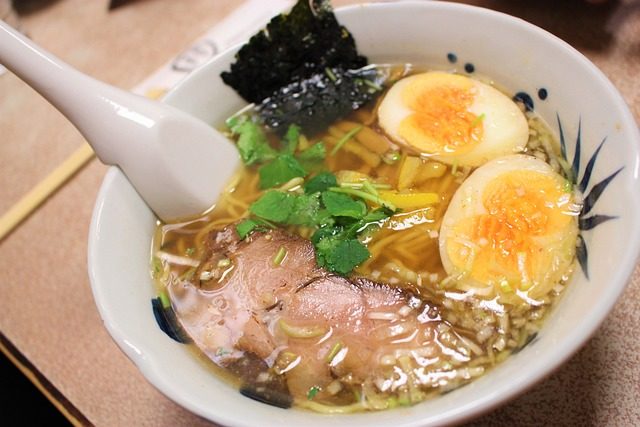
One of the best aspects of shoyu ramen is its customizable toppings, allowing you to cater to your personal preferences and create a dish that’s uniquely your own. You can choose from a variety of meat and vegetarian options, ensuring a delicious and satisfying ramen experience. Whether you prefer chashu pork, seasoned tofu, or an assortment of vegetables, the choice is yours!
Meat Options
Popular meat toppings for shoyu ramen include:
Chashu pork: made from pork belly that has been marinated and simmered, resulting in a tender, flavorful topping
Seafood: such as shrimp, squid, or scallops
Narutomaki (fish cake): a type of processed white fish product that adds a subtle flavor and a bright pop of color to your ramen
These meat options provide a delicious and satisfying addition to your bowl.
Vegetarian Choices
For those seeking vegetarian options, toppings can include:
Seasoned tofu: adds a tasty protein source
Shiitake mushrooms: provide a savory, earthy flavor
Various vegetables: carrots, onions, and bell peppers add freshness and crunch to your ramen
With these options, you can create a flavorful and satisfying vegetarian ramen dish.
Mastering the Art of Ramen Eggs
Ramen eggs, a soft-boiled egg with a runny yolk, are a popular topping for shoyu ramen. Perfecting these eggs involves mastering soft-boiling techniques and experimenting with different marinades to find your favorite flavor.
Once you’ve mastered the art of ramen eggs, you’ll elevate your shoyu ramen to a whole new level of deliciousness.
Soft-Boiling Techniques
Careful timing and an ice bath are key to achieving the perfect soft-boiled ramen egg. Boil the eggs for 6 ½ to 7 minutes, then immediately plunge them into an ice bath to stop the cooking process and preserve their soft, runny yolks.
The ice bath also makes the eggs easier to peel, ensuring a smooth and appetizing appearance.
Marinade Options
Ramen eggs can be marinated in a variety of flavorful solutions, such as:
Soy sauce
Miso
Mirin
Rice vinegar
Sesame oil
Garlic
Ginger
The marinade enhances the flavor of the eggs and gives them a beautiful brown color on the outside. Experiment with different marinades and soaking times to find your favorite combination, and enjoy the delicious results in your shoyu ramen.
Assembling Your Shoyu Ramen Bowl
When it comes to assembling your shoyu ramen bowl, timing is key, as is attention to presentation. Ensuring your broth is ready before your noodles finish cooking will help avoid soggy noodles.
Arrange toppings in an aesthetically pleasing manner, making your ramen bowl as visually appealing as it is delicious.
Timing is Key
When assembling your shoyu ramen bowl, timing is of the essence. Prepare the soup broth and toppings while the noodles cook separately, ensuring all components are ready at the same time for optimal taste and texture.
Careful coordination in the preparation of each element ensures a bowl of shoyu ramen that’s both aesthetically pleasing and delicious.
Presentation Tips
A beautifully presented ramen bowl is sure to impress, so take the time to arrange your toppings in an eye-catching manner. Layer sliced chashu pork, ramen eggs, and vegetables, and garnish with green onions or other herbs for a pop of color.
With a little attention to detail, your delicious ramen, specifically the shoyu ramen, will look as amazing as it tastes.
Vegan and Gluten-Free Alternatives
For those with dietary preferences or restrictions, vegan and gluten-free alternatives can be incorporated into your shoyu ramen recipe. Gluten-free noodle options, such as rice noodles and buckwheat soba, can be found at specialty stores or online retailers.
Vegetable stock and kombu-based dashi provide a vegan broth option, offering a delicious alternative to the traditional shoyu ramen.
Vegan Broth Options
Vegan broth options for shoyu ramen include vegetable stock and kombu-based dashi, providing a tasty base for your ramen. Sesame oil, minced garlic, grated ginger, daikon radish, leek, mushrooms, and cashews can be added to the broth for extra flavor.
These vegan alternatives allow you to craft a satisfying and flavorful ramen dish tailored to your dietary preferences.
Gluten-Free Noodles
Finding gluten-free noodles for your shoyu ramen is easy, with options available at specialty stores and online retailers. Some fantastic gluten-free alternatives include:
Millet and brown rice ramen
Tapioca noodles
Buckwheat soba noodles
Rice noodles
Incorporating these noodles into your ramen recipe allows you to savor a delicious bowl of shoyu ramen noodle soup without neglecting your dietary needs.
Summary
In conclusion, making shoyu ramen at home is an exciting culinary adventure that allows you to tailor the dish to your personal preferences. With a flavorful broth, chewy noodles, and endless topping options, you can create a mouthwatering bowl of ramen that’s sure to impress. So why not roll up your sleeves, gather your ingredients, and embark on your own shoyu ramen journey? Itadakimasu!
Frequently Asked Questions
What is Shoyu ramen vs tonkotsu?
Shoyu ramen is made with a tangy, flavorful broth and curly noodles, and is the most familiar type of ramen found in Tokyo. Tonkotsu is unique in that its broth is thick and cloudy white, as it is created with pork bone. Both can be made with meat, poultry or seafood, but only tonkotsu includes pork hock and trotters.
What is Shoyu ramen vs miso ramen?
Shoyu ramen is the classic soy sauce-flavored ramen, while miso ramen is flavored with its close cousin miso. Tamari, a gluten-free form of soy sauce, is the liquid produced during the fermentation of miso.
Is shoyu broth sweet?
Shoyu broth is known to be sweet and salty, often accompanied with Chashu Pork and Soy Sauce Eggs. Enjoy this delicious flavor in your next bowl of ramen!
What is the main flavor component of shoyu ramen?
Shoyu ramen is bursting with rich, savory flavor from its soy sauce-based broth – a truly delightful treat!
Can I use dried noodles if fresh ramen noodles are unavailable?
Yes! Dried noodles are a great alternative if fresh ramen noodles are unavailable. Enjoy the great texture and flavor!




